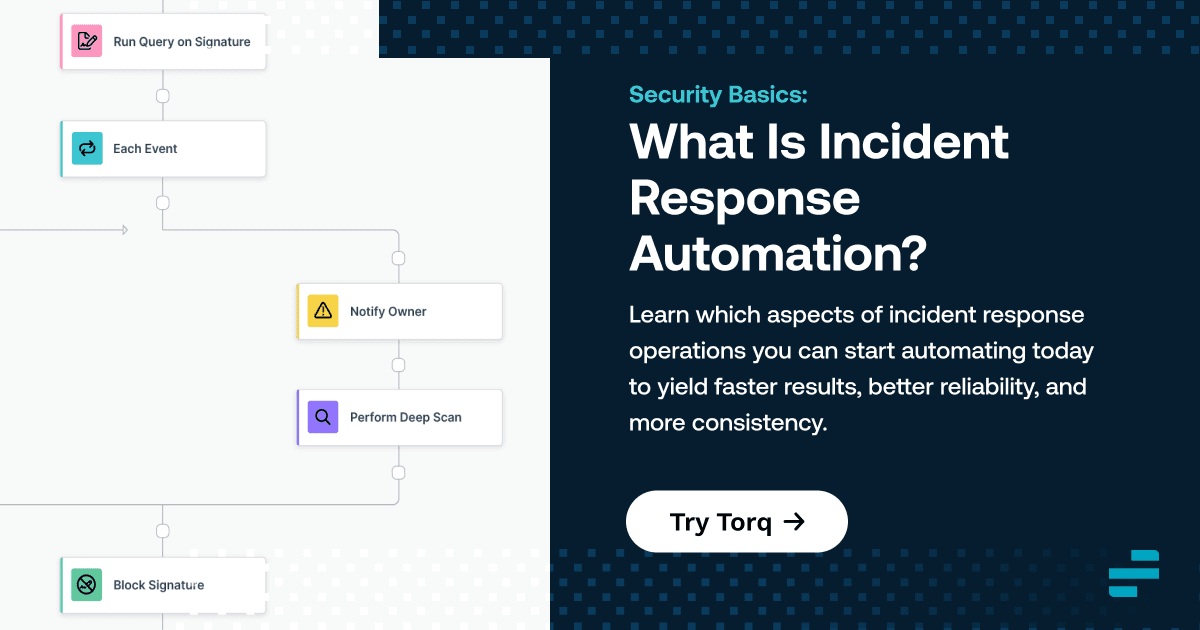Incident response is one of the most challenging tasks that IT teams face. It’s challenging not just because it typically involves many stakeholders and moving pieces, but also because teams usually face pressure to respond as quickly as possible.
That’s why investing in incident response automation is a wise choice. Although it may not be possible to automate every aspect of every incident response workflow, being able to automate at least the major elements of incident response will yield incident management processes that are faster, more reliable, and more consistent.Keep reading to learn about the components of incident response and which incident response activities to start automating.
What Is Incident Response?
In the world of IT, incident response is the process that takes place when teams detect an incident that poses a serious risk to IT operations.Incidents can be cybersecurity problems, like the detection of a software zero-day vulnerability or the existence of malware inside an IT environment.Incidents can also be failures that are not related to security problems. For example, the crash of a mission-critical application or the accidental deletion of important data could trigger incident response operations.
The Components of Incident Response
Each incident is unique, and each incident response needs to be tailored to meet the special requirements of the incident. However, in most cases, incident response hinges on three types of resources.
People
First and foremost, incident management requires some level of intervention by human actors. Humans may need to determine what caused the incident, what the solution is, and how the solution can best be implemented. Humans might also have to manage the sharing of information between the various stakeholders who are affected by an incident or are part of the response operation.
Some of these activities can be automated, so the level of human involvement in incident response may be limited. But, at a bare minimum – even in the context of very simple incidents that can be resolved automatically – humans would at least need to be notified that an incident has occurred and a response has taken place.
Tools
Whether it’s manual or automated, incident response requires tools. Alerting tools tell teams about an incident. Analytics and debugging software can help them investigate the incident and identify its root cause. Collaboration tools help stakeholders share information and plan response activities.
Processes
Incident response also involves a set of processes. These processes define who does what, using which tools, in order to identify, investigate, and resolve the incident. Frameworks like MITRE offer guidance on what processes to take depending on the particular situation.
What Is Incident Response Automation
Incident response automation is the use of tools to automate one or more aspects of your incident response. Depending on the types of incidents you are dealing with, you can likely use automation tools to automate at least one significant part of your incident response operations.
Aspects of incident response that are obvious candidates for automation include:
- Alerting: There’s no good reason to wait on humans to tell you that an incident has occurred. Automate alerts based on your monitoring and analytics data.
- Incident prioritization: In the event that multiple incidents occur at once, automation tools can help to assess the severity of each one, so your team knows which to prioritize.
- Communication: Automation tools can help to ensure that each stakeholder receives the appropriate information during incident response. This is important because different people may need different types of information. C-level executives may want to know what the incident means for the business, for example, while IT engineers need technical information to help them resolve the incident.
- Remediation: In some situations, incidents can be resolved automatically. For example, if a vulnerability scanner detects a zero-day vulnerability in an application, and the vulnerability is fixed in an updated version of the app, you could use automated tools to deploy a new version of the app in order to fix the vulnerability risk.
- Reporting and post-mortems: After a serious incident has been resolved, it’s common to perform a “post-mortem” and prepare a report that explains what went wrong and which steps the team has taken to prevent a similar incident from occurring. Automation tools can help to generate and organize the data inside these reports.
Incident Response Playbooks vs. Automation
In many cases, organizations create incident response playbooks, which define who will do what during incident response operations.
It’s important to note, however, that playbooks alone are not a form of automation. Playbooks are instead a plan for incident response.
Playbooks can certainly be automated by deploying tools that can operationalize the steps within playbooks. But, having a playbook alone doesn’t equate to having automated incident response. Playbooks are more of a first step toward automating incident response processes.
Torq’s Role in Incident Response Automation
With Torq, security teams can deliver improved security without a significant increase in manpower. Automation ensures consistent execution of day to day tasks, and triggered workflows speed incident response and reduce manual effort which, in turn, lets security practitioners do more professionally rewarding work, preventing burnout and attrition. Torq’s ease of use and out of the box integrations mean that security teams no longer need to invest in expensive professional services or middleware development.
Conclusion
Although there will always be a need for human participation in most incident response operations, many components of incident response can be automated – and they must be automated if you want to reduce incident response time, minimize the risk of error, and keep response processes consistent across different types of incidents.




